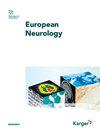MRI在耐药局灶性癫痫治疗中的作用
IF 2.1
4区 医学
Q3 CLINICAL NEUROLOGY
引用次数: 6
摘要
背景:癫痫是一种流行的慢性疾病,影响全世界约5000万人。三分之一的局灶性癫痫患者出现对药物无反应的癫痫发作。不受控制的癫痫发作会损害大脑,与认知能力下降有关,并对健康产生负面影响。对于这些患者,手术切除引起癫痫发作的大脑区域是最有效的治疗方法。摘要:磁共振成像(MRI)在检测癫痫性脑病变中起着核心作用。在这篇综述中,我们批判性地讨论了神经成像采集、分析采集后技术和机器学习方法在检测癫痫性病变、预测临床结果和识别疾病亚型方面的进展。关键信息:MRI是诊断和治疗癫痫的强制性检查,特别是当考虑手术时。影像技术的不断进步,结合机器学习,将继续推动病变可见性的界限,并提供越来越精确的临床结果预测。目前的努力旨在加强癫痫学家在神经成像方面的能力,最终将减少对侵入性诊断的需求。本文章由计算机程序翻译,如有差异,请以英文原文为准。
The Role of MRI in the Treatment of Drug-Resistant Focal Epilepsy
Background: Epilepsy is a prevalent chronic condition affecting about 50 million people worldwide. A third of patients with focal epilepsy suffer from seizures unresponsive to medication. Uncontrolled seizures damage the brain, are associated with cognitive decline, and have negative impact on well-being. For these patients, the surgical resection of the brain region that gives rise to seizures is the most effective treatment. Summary: Magnetic resonance imaging (MRI) plays a central role in detecting epileptogenic brain lesions. In this review, we critically discuss advances in neuroimaging acquisition, analytical post-acquisition techniques, and machine leaning methods for the detection of epileptogenic lesions, prediction of clinical outcomes, and identification of disease subtypes. Key Message: MRI is a mandatory investigation for diagnosis and treatment of epilepsy, particularly when surgery is being considered. Continuous progress in imaging techniques, combined with machine learning, will continue to push the boundaries of lesion visibility and provide increasingly precise predictors of clinical outcomes. Current efforts aiming at strengthening the competences of epileptologists in neuroimaging will ultimately reduce the need for invasive diagnostics.
求助全文
通过发布文献求助,成功后即可免费获取论文全文。
去求助
来源期刊

European Neurology
医学-临床神经学
CiteScore
4.40
自引率
4.20%
发文量
51
审稿时长
4-8 weeks
期刊介绍:
''European Neurology'' publishes original papers, reviews and letters to the editor. Papers presented in this journal cover clinical aspects of diseases of the nervous system and muscles, as well as their neuropathological, biochemical, and electrophysiological basis. New diagnostic probes, pharmacological and surgical treatments are evaluated from clinical evidence and basic investigative studies. The journal also features original works and reviews on the history of neurology.
 求助内容:
求助内容: 应助结果提醒方式:
应助结果提醒方式:


